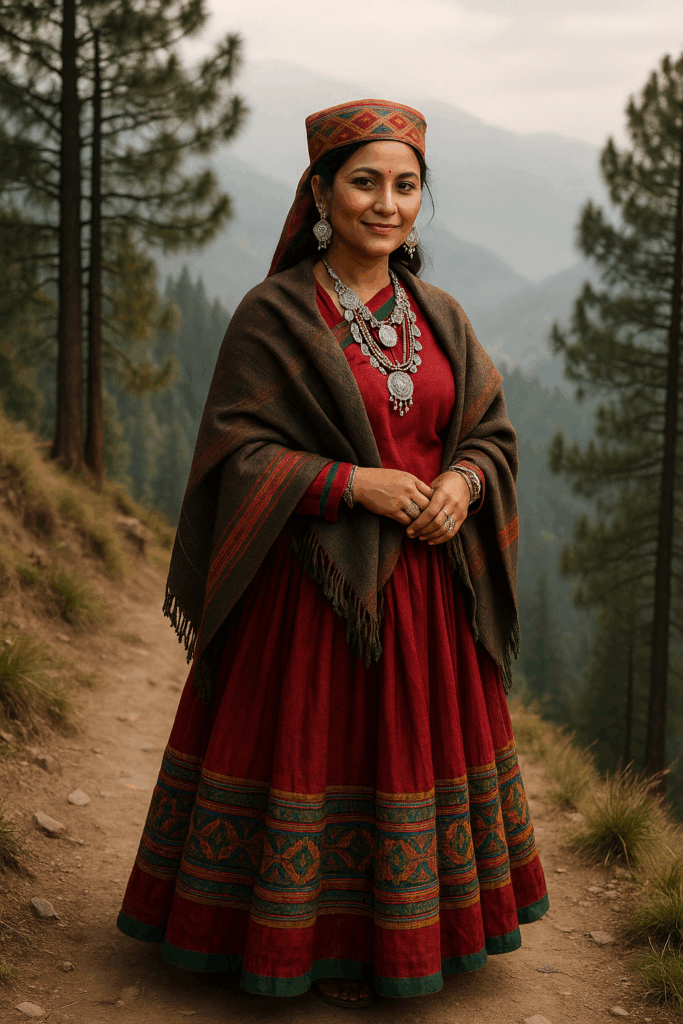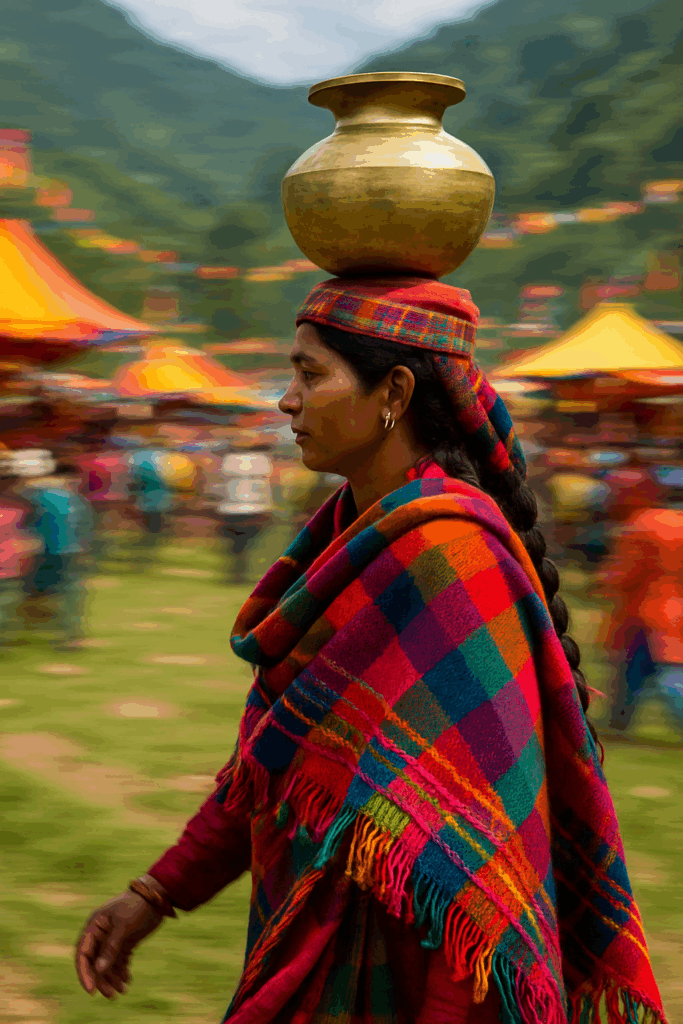Concealed in the folds of the Himalayas lies Himachal Pradesh, which is not only a state of hills but a state of cultural diversity deep into its dressing. Himachal traditional dress is not just clothes – it’s a shadow, a badge of honor of the community, and a reflection of heritage that has run generation after generation.
**Women’s Traditional Attire – A Touch of Elegance**
The traditional dress for Himachali women differs from region to region, yet carries the same essence of warmth and grace. Most commonly worn is the **‘Ghagri-Choli’** or **‘Ghaghra-Choli’**, paired with a **‘Dhathu’** (headscarf) that signifies modesty and marital status.
In Kullu, women wear vibrant **woolen shawls**, handwoven with geometric and floral motifs, known as **‘Kullu Patti’**. These shawls are not just accessories – they are heirlooms. The bright hues and symbolic patterns represent seasons, festivals, and even protection from evil.
Women in Chamba prefer **‘Luanchadi’**, a traditional gown-style outfit worn with silver jewellery and beaded necklaces like **‘Chakker’** and **‘Balu’**. One might hear locals say with pride, *“Chamba ki naari, silver jhari”*, highlighting their love for traditional ornaments.
**Men’s Traditional Attire – Simplicity with Pride**
Himachali men generally wear **Kurta-Churidar or Pyjama**, with a long woollen **coat called Chola**, especially in colder regions. The most iconic piece of their attire is the **‘Himachali Topi’** – a cap that varies in color and style across districts.
For instance, **Kullu topis** flaunt a colorful band called **‘Patti’**, while **Bushehri topis** (from Shimla side) are more muted, dignified, and formal. Every Himachali man wears his topi with pride – it’s a symbol of his roots. *“Topi ta Himachal di shaan aa,”* as they often say.
*The Language of Fabric and Handloom**

All the traditional clothing are made of **locally manufactured wool**, which is time-consuming on village homestead looms. The **Pattu**, a square piece of wool shawl folded across the shoulders, is a quintessence of the marriage of utility and beauty.
These are not merely the season’s wear – they hold importance in wedding ceremonies, melas, or religious events. Each strand, each hue, each weave is imbued with meaning by where it was conceived and by whom it is donned.
**Keeping the Past Alive, Inspiring the Future**
Nowadays, contemporary versions of these dresses are seeping into the contemporary wardrobe. Local designers and craft persons are marrying old with new – Himachali dress is no longer history, but a movement.
Whether it is the beating of pulaas in a Kullu village or the regal walk of a Chamba bride, Himachal’s people dresses are a tale – of survival, of imagination, and of simple pahadi pride.
Recommended1 recommendationPublished in Jewelry, Our Fashion Passion




